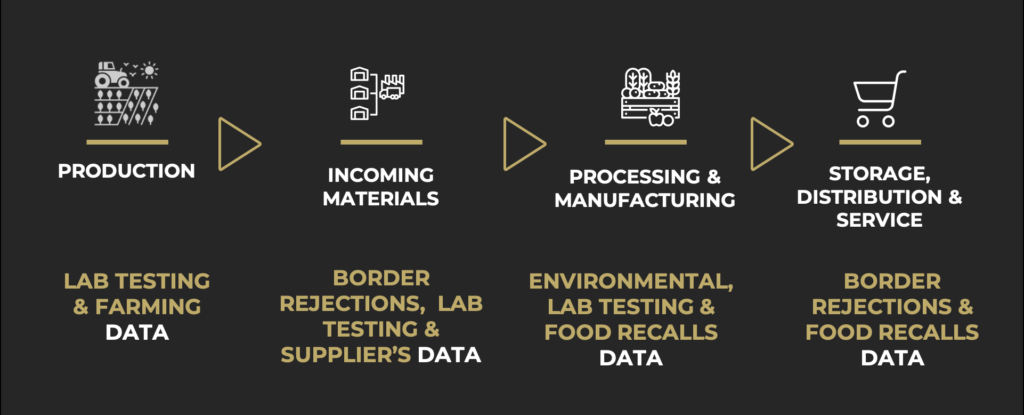Often the food safety professional have to take into consideration a lot of things before making any decision about the supply chain. Food safety plays a key role in the company’s brand reputation, so product recalls and border rejections are causing serious damage to brand image and trust. Therefore, risk assessment should always be accurate, timely and reliable as it is one of the most important and crucial tools for the prevention of recalls. However, nowadays risk assessment and analysis is approached as a checklist and yet it is not an optimised process. Too often this essential process is performed by analysing relevant historical incidents using spreadsheets, despite the enormous investments made by the company in software systems. This cannot provide trustworthy results that would help experts to identify emerging and increasing risks.
The global supply chain is complex, and risks should be assessed at each level (from incoming materials and suppliers, to manufacturing, storage, distribution, and retail). As mentioned in a previous article, risk assessment is not something generic and cannot be addressed at a single level of food production.

The COVID-19 pandemic, followed by travel restrictions and lower budgets, has highlighted the need for systematic risk assessment supported by all global insights, thus, the highest effectiveness of a remote audit can be ensured. Each safety and quality assurance team needs to access the most relevant and historical data relating to recalls, border rejections, legislation, scientific publications, news, laboratory testing programs, new risk models, new methods, and systems. On the other hand, it does not mean that these professionals should be overwhelmed with countless data. Different teams must focus on different ingredients, food categories and hazards.
Nowadays, innovative research, improved testing technologies and monitoring systems, have resulted in an abundance of data on risks for the entire food supply chain. The problem is that data is so scattered, heterogeneous, multilingual, and disconnected, so that it becomes impossible to handle them, unless we add some technology magic into the mix. It is not easy for the human mind to filter only the relevant information and data to identify trends and evaluate hazards. The analysis takes forever.
To overcome this liability there are several tools, online platforms, resources, even software systems to help, but it is still a time-consuming and error-prone process, because the professional would have to collect all the information, organize it in a spreadsheet, then analyze all the hazards, estimate the risk and finally report the results, which may be untrustworthy.



